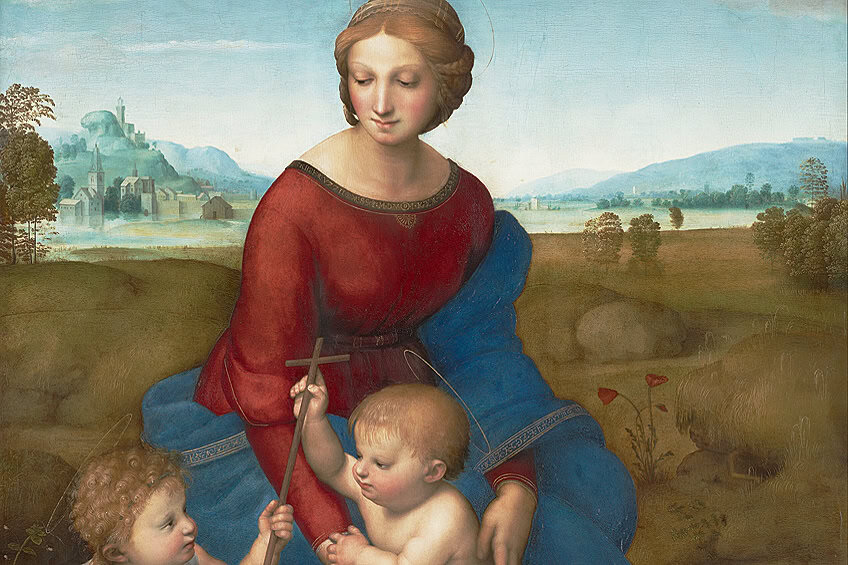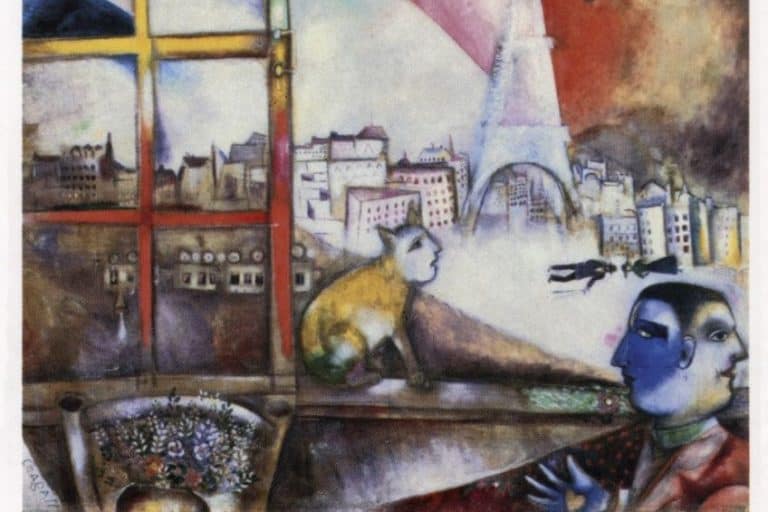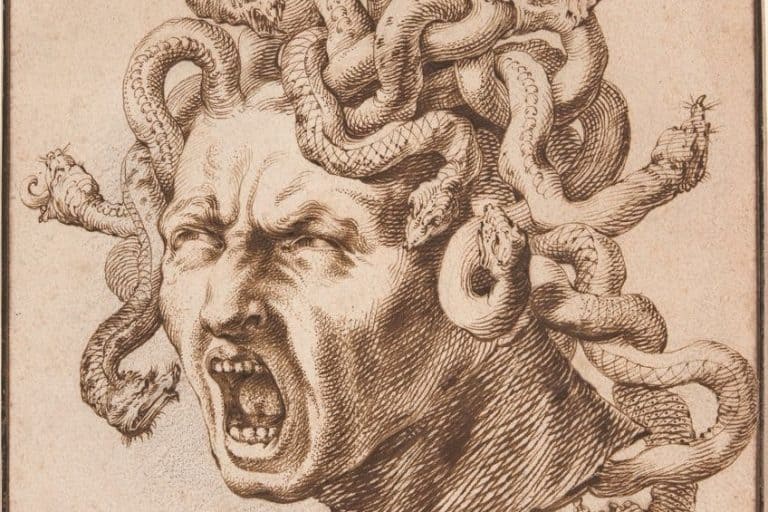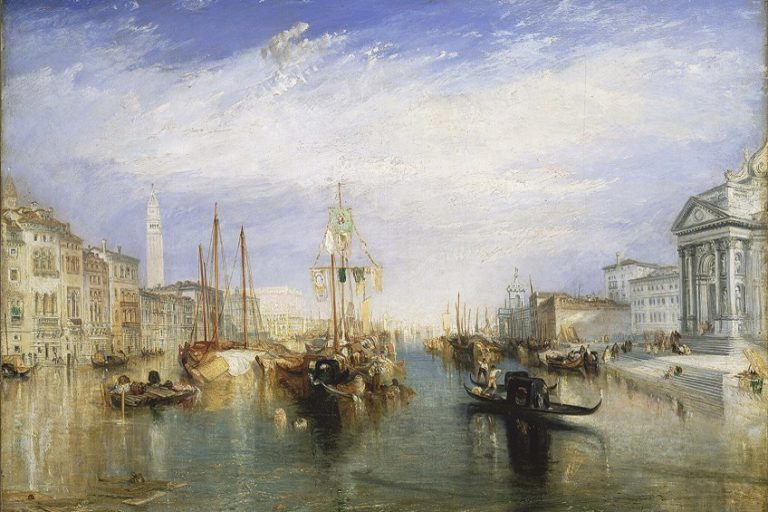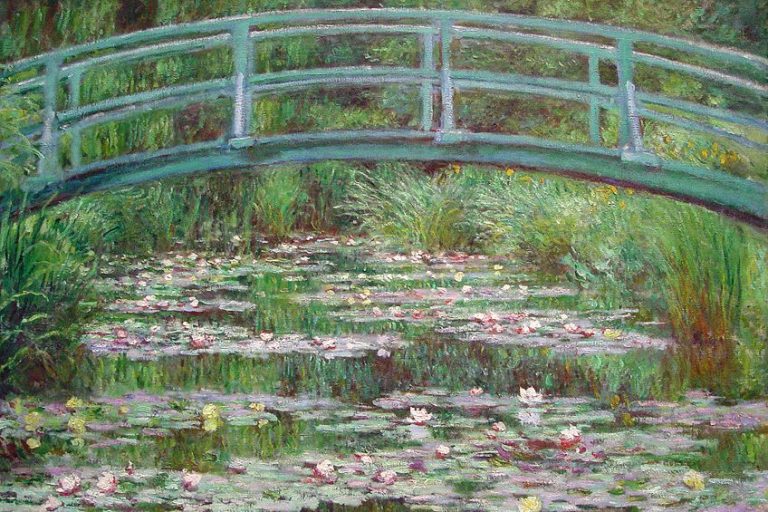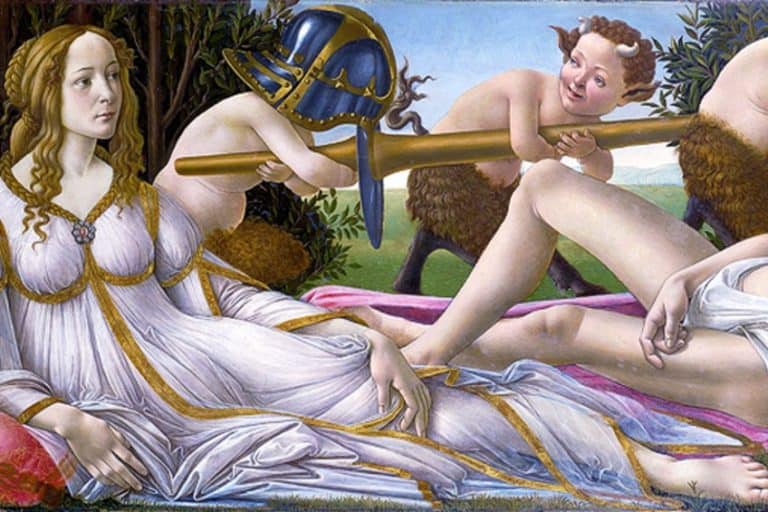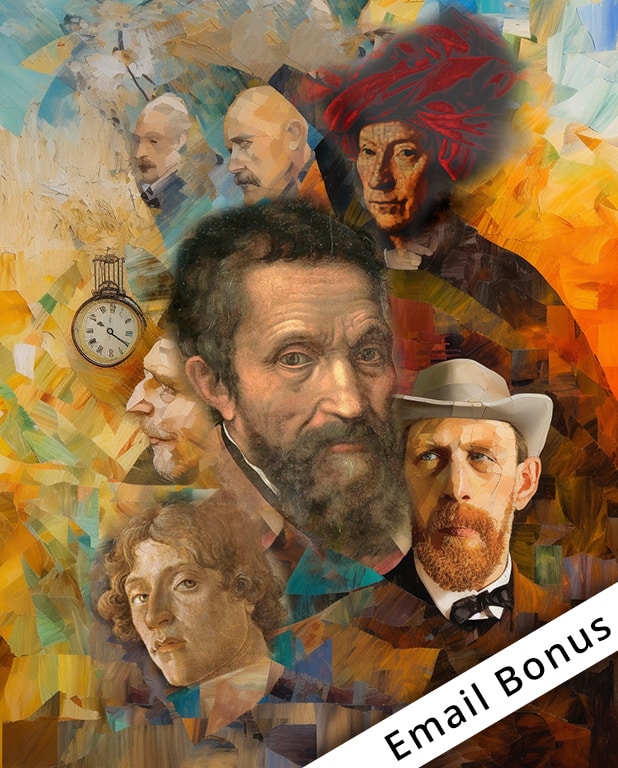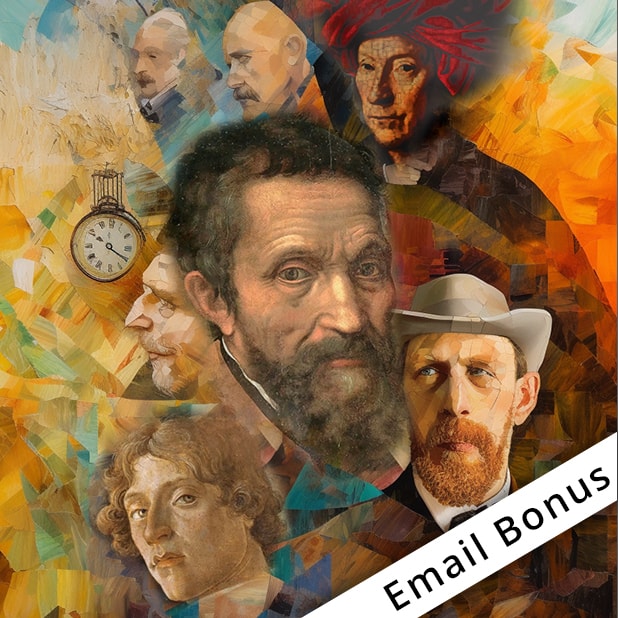Madonna in the Meadow by Raphael – A Renaissance Masterpiece
Madonna in the Meadow, painted around 1505-1506 by a young Raphael during his time in Florence, stands as one of the Renaissance master’s most celebrated works. This pyramidal composition, also known as Madonna del Prato or Madonna Belvedere, beautifully depicts the Virgin Mary with the infant Jesus and young John the Baptist in a serene landscape. In this early masterpiece, Raphael skillfully combines Leonardo da Vinci’s influence through subtle chiaroscuro with his own Umbrian artistic sensibilities, creating a harmonious scene that exemplifies Renaissance ideals of beauty and spiritual grace.
Key Takeaways
- Madonna in the Meadow represents Raphael’s artistic growth during his Florentine period, blending Leonardo’s techniques with his unique style.
- The pyramidal composition and delicate portrayal of figures exemplify Renaissance ideals of harmony, beauty and spiritual devotion.
- The painting is currently housed in the Kunsthistorisches Museum in Vienna where it continues to be admired for its technical perfection and emotional resonance.
| Artist | Raphael (1483 – 1520) |
| Date Painted | 1505 – 1506 |
| Medium | Oil on wood |
| Genre | Religious |
| Period / Movement | High Renaissance |
| Dimensions (cm) | 113 x 88 |
| Series / Versions | Part of Raphael’s Madonna series |
| Where Is It Housed? | Kunsthistorisches Museum, Vienna |
| What It Is Worth | Considered priceless; not for sale |
Painting Analysis of Madonna in the Meadow
Raphael’s Madonna in the Meadow (1505-1506) showcases his masterful technique through a harmonious composition, thoughtful color symbolism, and meaningful religious themes. The painting exemplifies Renaissance ideals through its balanced structure and serene atmosphere.
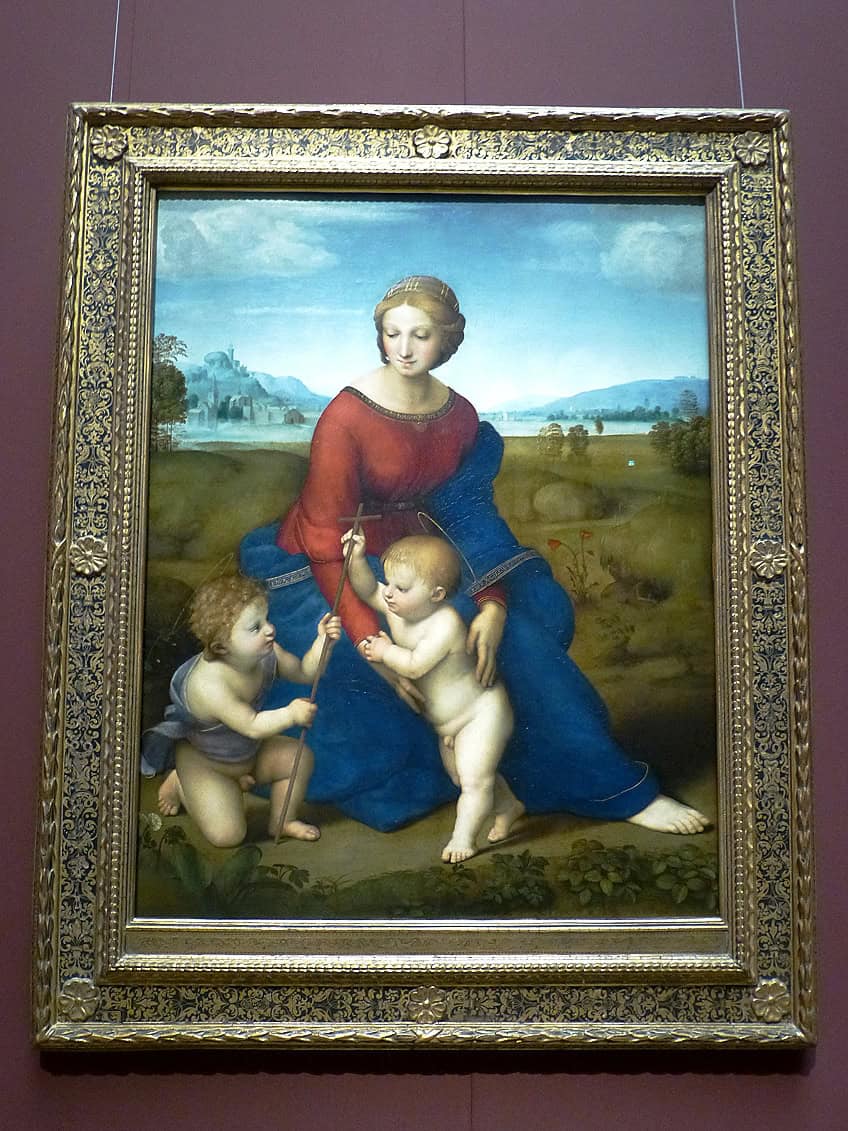
Composition and Subjects
The painting presents a pyramidal composition, a technique Raphael adopted from Leonardo da Vinci. This triangular arrangement creates visual stability and guides the viewer’s eye throughout the scene.
The Virgin Mary sits at the apex of the triangle, with the Christ Child and young John the Baptist positioned at the base. Their tender interaction forms the emotional center of the work.
The figures are placed against a serene Italian countryside that recedes into the distance. This landscape setting, unusual for earlier Madonna paintings, reflects the Renaissance interest in natural environments.
Mary’s gaze directed at Christ establishes their connection while her posture creates a protective presence over both children. The balanced positioning of all three figures demonstrates Raphael’s careful attention to spatial relationships.
Use of Color and Light
Raphael employs a rich color palette dominated by the Madonna’s traditional red dress and blue mantle with gold borders. These colors weren’t arbitrary but carried significant religious symbolism.
The blue mantle represents the Church and heaven, while the red dress symbolizes Christ’s future sacrifice. The gold borders indicate Mary’s royal and divine status.
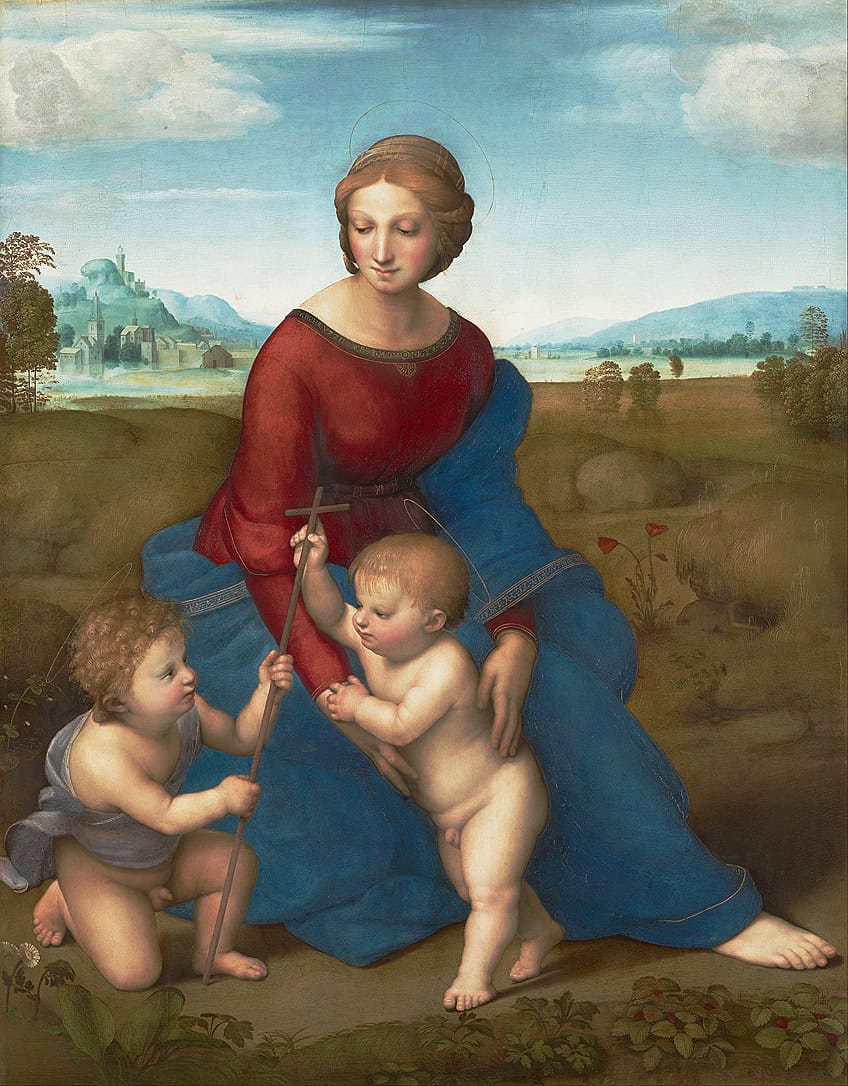
Subtle chiaroscuro (light and shadow modeling) gives the figures three-dimensional form. This technique, also borrowed from Leonardo, creates realistic volume in the faces and drapery.
The landscape features gradual color transitions from earthy browns in the foreground to atmospheric blues in the distant mountains. This creates depth and draws the viewer into the peaceful scene.
Light bathes the figures evenly, illuminating their features with a gentle glow that enhances the painting’s serene quality.
Symbolism and Themes
The painting is rich in religious symbolism that would have been immediately recognized by Renaissance viewers. The cross held by the infant John the Baptist foreshadows Christ’s future crucifixion.
The meadow setting represents Paradise and purity, reinforcing Mary’s role as the immaculate vessel. The open landscape also symbolizes the universal reach of Christianity.
Mary’s thoughtful expression suggests her foreknowledge of Christ’s destiny. Her protective posture illustrates her dual role as both mother and spiritual intercessor.
The tender interaction between the children represents the relationship between Christ’s mission and John’s role as his herald. Their physical connection shows their intertwined spiritual purposes.
The overall serenity of the scene captures a moment of maternal love while simultaneously alluding to deeper theological meanings about salvation and divine providence.
Influence and Legacy
Raphael’s “Madonna in the Meadow” (Madonna del Prato) created in 1505-1506 represents a pivotal moment in Western Art history. The painting demonstrates Raphael’s absorption of influences from Leonardo da Vinci, particularly in its pyramidal composition and subtle chiaroscuro technique.
After moving to Florence in 1504, the young Raphael studied the works of both Leonardo and Michelangelo, synthesizing their approaches into his own distinctive style. This creative exchange helped establish new standards for Renaissance art.
The painting’s balanced composition and serene figures became hallmarks of Raphael’s mature style. His ability to imbue religious subjects with natural human warmth while maintaining divine dignity influenced generations of artists.
The symbolic elements in “Madonna in the Meadow,” such as the poppy representing Christ’s sacrifice, demonstrate Raphael’s skillful integration of religious symbolism with aesthetic perfection. These techniques became fundamental to Western religious art.
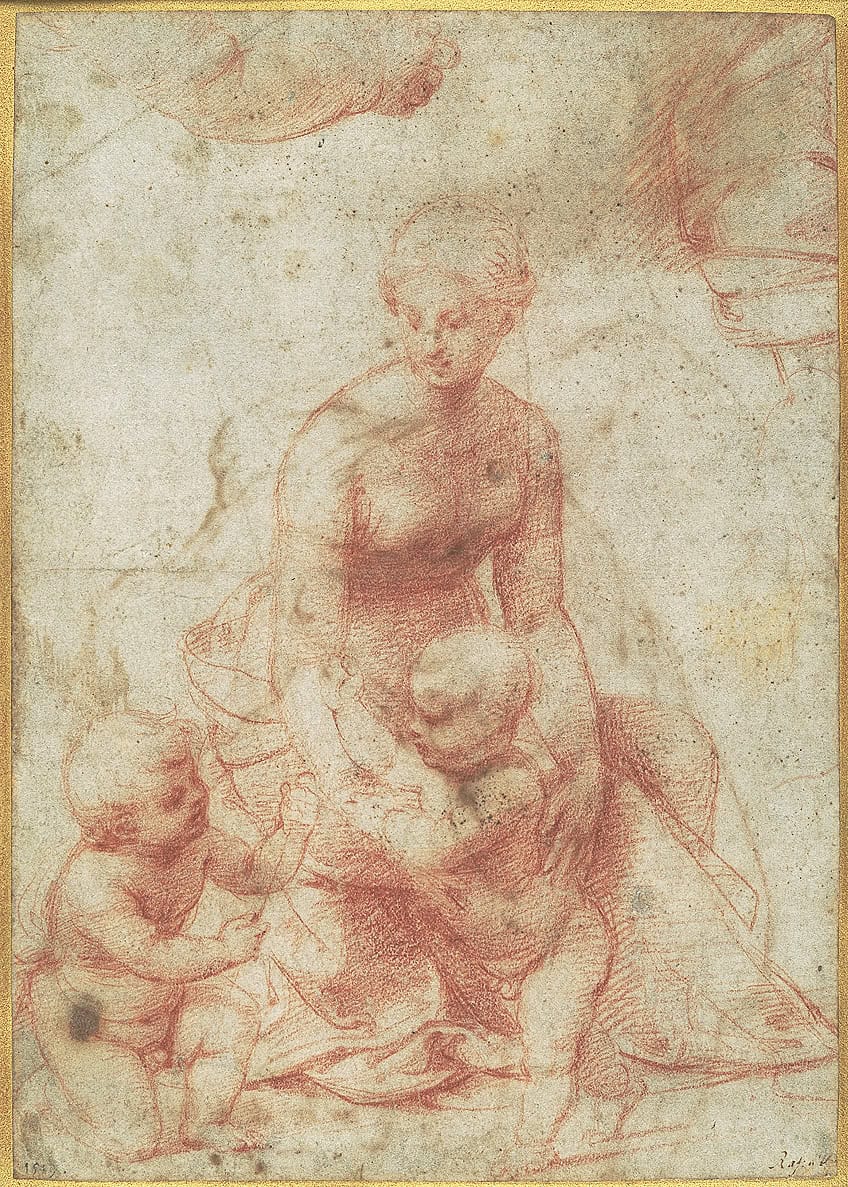
Art historians regard this work as exemplifying Raphael’s mastery of form, color, and emotional expression. The painting’s harmonious integration of figures within a landscape setting established new possibilities for compositional arrangement.
The work continues to resonate in contemporary culture as an icon of Renaissance achievement. Its influence extends beyond painting into broader visual culture, where Raphael’s approach to depicting the Madonna and Child has become a standard reference point for representations of maternal tenderness.
Historical Context
Raphael painted “Madonna in the Meadow” (also known as “Madonna del Prato” or “Madonna Belvedere”) around 1505-1506 during his time in Florence. This period marks a significant transition in his artistic development.
In 1504, the young Raphael moved from Perugia to Florence, where he encountered the works of Leonardo da Vinci and Michelangelo. These two masters dominated the artistic landscape of Florence at the time, significantly influencing Raphael’s evolving style.
The painting demonstrates clear Leonardesque influences, particularly in its pyramidal composition and subtle use of chiaroscuro (light and shadow). Raphael was in his early twenties when he created this masterpiece, showcasing his remarkable talent at a young age.
This work belongs to Raphael’s Florentine period (1504-1508), just before he moved to Rome in 1508 at the invitation of Pope Julius II. In Rome, he would go on to create some of his most celebrated works, including the Vatican frescoes.
The early 16th century was a golden age for Italian Renaissance art, with Florence as a crucial center. Artists were exploring new techniques in perspective, composition, and naturalism, all evident in “Madonna in the Meadow.”
Dated to 1507, this painting represents a time when religious themes dominated Italian art, though treated with increasing naturalism and human emotion characteristic of Renaissance values.
Conservation and Display
The “Madonna in the Meadow” by Raphael, also known as “Madonna del Prato” or “Madonna Belvedere,” is currently housed in the Kunsthistorisches Museum in Vienna, Austria. This masterpiece from Raphael’s Florentine period has undergone careful conservation efforts throughout its history to preserve its remarkable details and colors.
Conservation specialists at the museum have implemented strict environmental controls to protect the oil on board painting from temperature fluctuations, humidity, and light damage. These measures help maintain the vivid blues of Mary’s robe and the delicate landscape elements that give the painting its name.
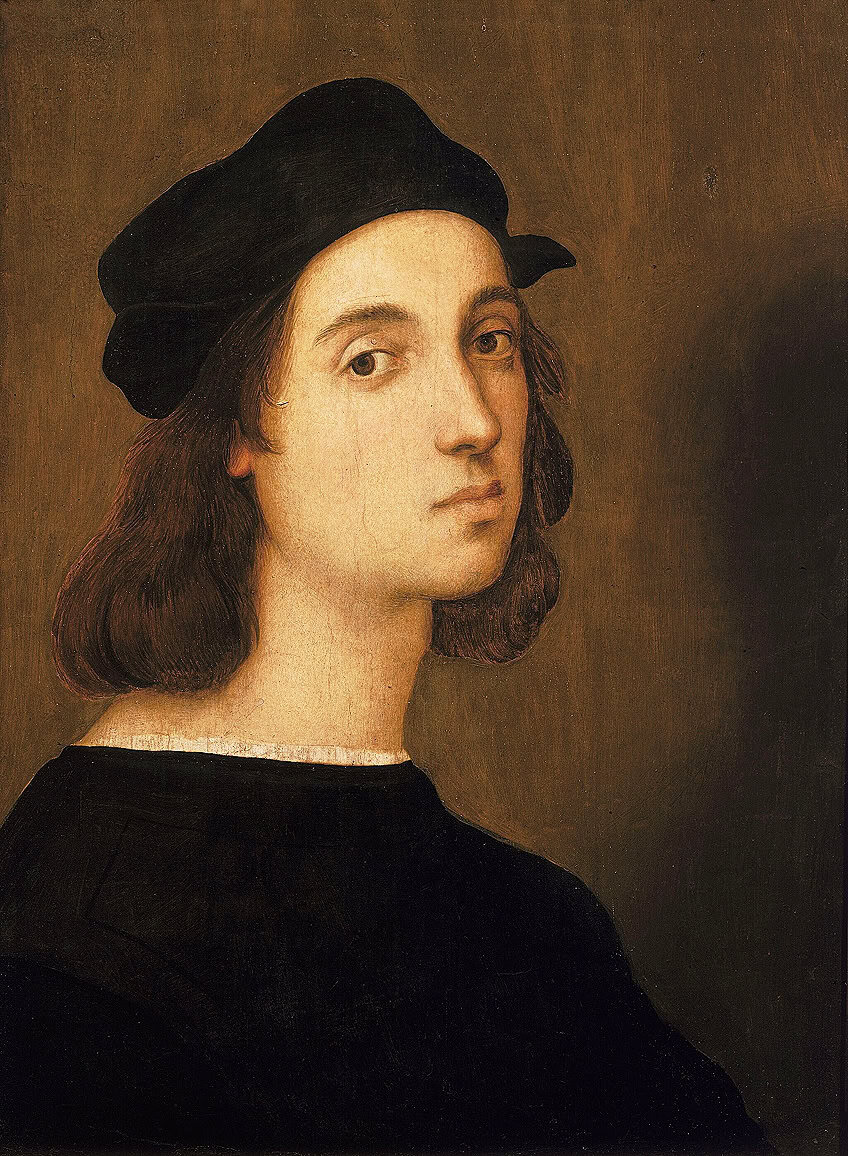
The artwork is displayed within the museum’s Italian Renaissance collection, where it serves as one of the highlights of Raphael’s Marian works. Visitors can view the painting in a specially designed gallery that optimizes viewing conditions while ensuring the painting’s long-term preservation.
The museum employs non-invasive examination techniques to monitor the painting’s condition, including infrared reflectography and specialized imaging. These methods allow conservators to detect any changes in the painting’s structure without risking damage to the original materials.
Unlike the National Gallery’s “Mackintosh Madonna,” which has a well-documented conservation history, specific details about restoration work on “Madonna in the Meadow” are more limited in public records.
Frequently Asked Questions
Raphael’s “Madonna in the Meadow” embodies Renaissance artistic principles with its harmonious composition and rich symbolism. The painting showcases Raphael’s technical mastery and thoughtful approach to religious imagery.
What is the meaning behind ‘Madonna of the Meadow’ by Raphael?
“Madonna in the Meadow” represents the peaceful relationship between the Virgin Mary, infant Jesus, and young John the Baptist in a serene landscape. The painting contains religious symbolism through the cross held by John the Baptist, foreshadowing Christ’s future sacrifice.
How did Raphael employ the use of medium in ‘Madonna in the Meadow’?
Raphael executed this work in oil on panel, allowing him to create smooth color transitions and delicate details. His masterful handling of the medium enabled the luminous quality of the figures and landscape that characterizes this celebrated work.
Can you explain the significance of the implied shape in ‘The Madonna of the Meadows’?
The composition is structured around a pyramid or triangular arrangement with Mary at the apex and the children forming the base. This geometric structure provides visual stability and harmony while symbolically elevating the Madonna’s importance in the hierarchical arrangement.
Isabella studied at the University of Cape Town in South Africa and graduated with a Bachelor of Arts majoring in English Literature & Language and Psychology. Throughout her undergraduate years, she took Art History as an additional subject and absolutely loved it. Building on from her art history knowledge that began in high school, art has always been a particular area of fascination for her. From learning about artworks previously unknown to her, or sharpening her existing understanding of specific works, the ability to continue learning within this interesting sphere excites her greatly.
Her focal points of interest in art history encompass profiling specific artists and art movements, as it is these areas where she is able to really dig deep into the rich narrative of the art world. Additionally, she particularly enjoys exploring the different artistic styles of the 20th century, as well as the important impact that female artists have had on the development of art history.
Learn more about Isabella Meyer and the Art in Context Team.
Cite this Article
Isabella, Meyer, “Madonna in the Meadow by Raphael – A Renaissance Masterpiece.” Art in Context. April 13, 2025. URL: https://artincontext.org/madonna-in-the-meadow-by-raphael/
Meyer, I. (2025, 13 April). Madonna in the Meadow by Raphael – A Renaissance Masterpiece. Art in Context. https://artincontext.org/madonna-in-the-meadow-by-raphael/
Meyer, Isabella. “Madonna in the Meadow by Raphael – A Renaissance Masterpiece.” Art in Context, April 13, 2025. https://artincontext.org/madonna-in-the-meadow-by-raphael/.


